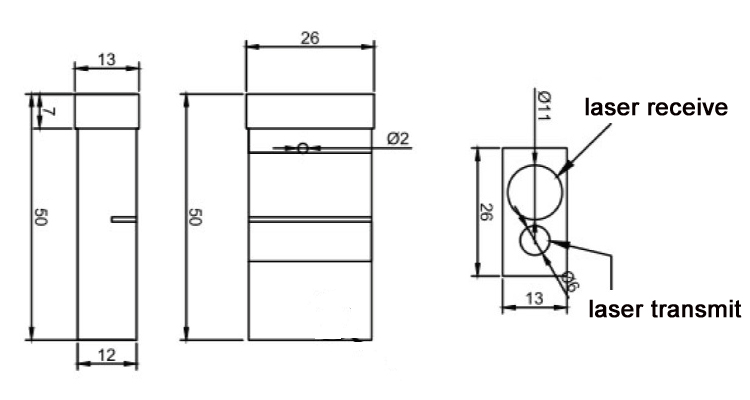First, master the sowing period and cutting period
For annual flowers, the methods of staging and batch sowing can be used to achieve the purpose of long flowering time. For the National Day to bloom, asters, amaranth, zinnia, marigold, a string of red should be sown or cut in mid-July. In order to have flowers on New Year's Day or the Spring Festival, flowers such as calendula, cineraria, and violets should be sown in September.
Second, planting time and depth
Grasping the season of planting bulbous flowers can make it bloom in the days when it is needed. For instance, if the national day is to bloom, it is advisable to engrave and raise the fish two weeks in advance. Some bulbous flowers are suitable for early flowering and shallow planting, such as shallow planting of jade can promote growth, early flowering, planting too deep is not good for growth, and flowering is also late.
Third, picking leaves and picking hearts
Some herbaceous flowers have a good grasping time and can control the flowering period. If the Dutch chrysanthemum is pruned on September 10, the National Day can bloom. A bunch of red flowers after 25 days of topping, that is, September 5 topping, the National Day has flowers; in early April topping, "May Day" has flowers.
Flowers that bloom in the following spring, such as magnolia, plum, peach, etc., will bloom on the National Day, and can be controlled after the artificial leaves are picked in late August. After the formation of flower buds, the management of water and fertilizers will be strengthened so that they will enter vigorous growth, and the flower buds will mature earlier and the National Day will bloom.
Four, pruning and budding
The flowering of a plant requires the consumption of many nutrients. The proper pruning and bud removal can concentrate the nutrients in the flower buds and make the flowers more brilliant and larger. Such as chrysanthemum, snapdragon, etc. pruning buds can be long flowering period, so that it blooms at the festival. Camellia, jasmine and roses, cut flowers after flowering, can promote its re-flowering.
Fifth, fertilization and shading treatment
For flowers such as Begonia, Lingxiao, Pterischis, Milan, and Oleander, if they are topically applied with 3% potassium dihydrogen phosphate or applied to the root 1 or 2 times, they can promote flower bud differentiation and early flowering.
Azaleas, smiling plants, and camellia flowers are placed in a cool, cold place when buds appear, which delays the flowering period until May Day. In the 50 to 60 days before the National Day, 8 to 9 hours of sunshine treatment of chrysanthemum flowers can bloom in the National Day. Poinsettia, crab claw cactus and other short days of 40 to 50 days in advance, can bloom in the National Day.
Sixth, hormone treatment
Ether, "920", chlorohydrin and other hormones can break the dormancy of flowers, such as 500ppm of "920" spots on the buds of peony, 4 to 7 days can sprout. Treating the dormant ball of tulips and freesia in ethereal gas can promote its growth and early flowering.
"920", naphthaleneacetic acid, and colchicine can accelerate the growth of flowers and promote flowering. If a cyclamen has buds in September, spraying a low concentration of "920" on the base of the stems and leaves can promote flowering. It has the same effect on Clivia and Hyacinth. For example, when Camellia flower buds have been formed in the summer and the National Day is to be bloomed, 500 to 1000 ppm of “920†flower buds can be applied every day in early September. In mid-September flower buds have been larger and their outer scales can be stripped off to 4 pieces. Camellia can be opened in 4 to 10 days. Flowers such as smiles and night primroses can also be treated with this method to promote flowering.
2,4-D can inhibit the opening of flowers. For example, spraying 2,4-D with 0.01ppm to 5ppm of chrysanthemum can delay the flowering period of chrysanthemum and slow the flowering of the court.
Long distance LiDAR sensor IT03M series are particularly easy to communication thanks to their fixed connector, which can be plugged it up and off by yourself. Voltage is wider from 3.3v before to 3.6v. Low power consumption feature makes it beceome a very competitive, high performance-price ratio, long range Laser Distance Sensor.
Highlights:
> Measurement frequency: 100 Hz (Max 200 Hz)
> High temperatures: -10~+50℃
> UART output
> Connector design: easy to use

Parameters of IT03M:
|
Accuracy |
+/-5cm@ 0.1~2.5m |
|
Measuring Unit |
cm |
|
Measuring Range (without Reflection) |
0.1-15m |
|
Measuring Time |
0.1~3 seconds |
|
Measuring Frequency |
100 Hz |
|
Laser Class |
Class II |
|
Laser Type |
650nm, <1mw, red |
|
Weight |
About 10g |
|
Voltage |
DC2.5V~+3.5V |
|
Serial Level |
TTL 3.3V |
|
Size |
50*26*13mm |
|
Operating Temperature |
0-40 ℃ (32-104 ℉ ) |
|
Storage Temperature |
-25~60 ℃ (-13~140 ℉) |
Speed Laser Sensor,Long Range Lidar,Long Range 3D Lidar,Long Range Radar Sensor
Chengdu JRT Meter Technology Co., Ltd , https://www.jrt-measure.com